Inca culture, with its mystical rituals and ceremonies, offers a fascinating glimpse into a world steeped in tradition and spiritual beliefs. From sacred sites and temples to ceremonial offerings and practices for health and well-being, the Inca people had a deep reverence for their deities and spirits. Exploring the rituals of this ancient civilization allows us to understand the profound significance they held in fostering social cohesion and maintaining a connection with the spiritual realm. Join us on a journey through the rich tapestry of Inca rituals and ceremonies, and discover the secrets that were passed down through generations in this captivating culture.
Contents
- The Importance of Rituals in Inca Culture
- Inca Sacred Sites and Temples
- Ceremonial Offerings and Sacrifices
- Ritual Practices for Health and Well-being
- Conclusion
-
Frequently Asked Questions
- What were the main purposes of rituals in Inca culture?
- Who were some of the important spirits and deities in Inca beliefs?
- What role did rituals play in social cohesion within Inca society?
- What is the significance of Machu Picchu in Inca culture?
- What is the Inti Raymi festival?
- What was the significance of Qorikancha, the Golden Temple?
- What was the traditional Inca beer called, and what was its role in ceremonies?
- Why did the Inca people practice animal sacrifices?
- What was the Capacocha ceremony, and why was it important?
- Who were the Kallawaya healers, and what role did their rituals play in Inca society?
- References
-
Frequently Asked Questions
- 1. What were the main spirits and deities worshipped in Inca culture?
- 2. How did rituals contribute to social cohesion in Inca society?
- 3. What is the significance of Machu Picchu in Inca culture?
- 4. What was the purpose of the Inti Raymi festival?
- 5. What was the significance of Qorikancha in Inca religion?
- 6. What was the role of chicha in Inca rituals?
- 7. Why were animal sacrifices important in Inca culture?
- 8. What was the Capacocha ceremony?
- 9. How did the Inca worship Pachamama, the goddess of the earth?
- 10. Who were the Kallawaya healers and what was their role in Inca society?
- References
- Read More
The Importance of Rituals in Inca Culture
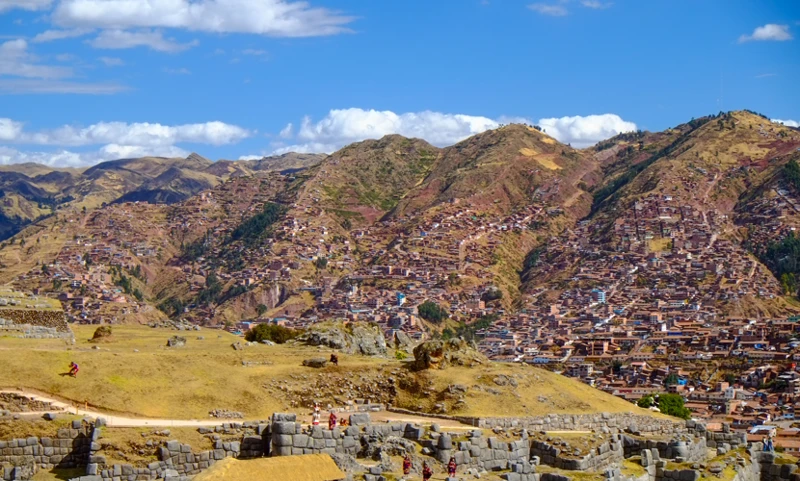
Rituals played a critical role in the fabric of Inca culture, serving as a means to connect with the spiritual realm and maintain harmony within their society. The Inca people believed in the existence of powerful spirits and deities who influenced every aspect of their lives. These rituals provided a way to communicate with these higher beings and seek their blessings and protection. Spirits and deities such as Wiracocha, Inti (the Sun God), and Pachamama (Mother Earth) held immense importance in Inca beliefs, and through carefully crafted rituals, the Inca people sought to honor them and ensure their favor. Additionally, these rituals fostered a sense of communal identity and unity, as they often involved the participation of the entire community. Such rituals were not only religious events, but also served as important social gatherings and celebrations, strengthening the bonds between individuals and reinforcing the values and norms of the Inca society. These sacred ceremonies held within them a deep spiritual significance, connecting the people to their ancestral past and offering a sense of continuity and purpose in the present. Anchoring their beliefs and reinforcing their cultural identity, rituals were an integral part of Inca life, and their importance cannot be overstated. /cultural-significance-ancient-constellations/
Spirits and Deities in Inca Beliefs
In Inca beliefs, spirits and deities held a central role and were revered as powerful entities influencing the lives of the people. These divine beings, known as “Apus” and “Wak’as,” were believed to inhabit natural elements such as mountains, rivers, and sacred sites. Each spirit and deity represented different aspects of the Inca worldview and played unique roles in their rituals and ceremonies.
One prominent deity in Inca beliefs was Wiracocha, the creator god who was considered to be the supreme deity in their pantheon. Wiracocha was associated with creation, fertility, and the well-being of the civilization. Other major deities included Inti, the Sun God, who provided light, warmth, and sustenance to the world, and Mama Quilla, the Moon Goddess, who governed timekeeping and feminine energies.
In addition to these major deities, there were various nature spirits and ancestral guardians worshipped by the Inca people. Pachamama, or Mother Earth, was one such spirit that symbolized fertility, abundance, and nourishment. The Inca held rituals and offerings to honor Pachamama and seek her blessings for a bountiful harvest and overall well-being. Another important spirit was the Huaca, which referred to sacred objects, places, or spirits that were believed to possess divine power. These Huacas resided in specific locations and were venerated in various rituals. The spirits and deities in Inca beliefs created a deeply spiritual framework for the people to connect with the divine and seek guidance and protection.
Exploring the diverse pantheon of spirits and deities in Inca beliefs offers a glimpse into the intricate cosmology and spiritual practices of this ancient civilization. By understanding their reverence for these powerful beings, we gain insight into the cultural and religious significance that shaped the Inca way of life. The rituals and ceremonies dedicated to these spirits and deities played a vital role in maintaining their connection with the spiritual realm and ensuring the well-being and prosperity of the Inca people. /legends-sagitta-constellation/
Rituals in Inca culture served a crucial role in fostering social cohesion and strengthening the bonds between individuals in the community. These ceremonies were not just religious practices but also significant social gatherings that brought people together in a shared experience. One of the primary ways in which rituals facilitated social cohesion was through the participation of the entire community. Whether it was a harvest ceremony or a religious festival, everyone had a role to play and contributed to the overall success of the ritual. This participation created a sense of collective identity and shared responsibility, promoting unity among the Inca people.
Rituals provided a platform for the transmission of cultural values and norms. Through these ceremonial practices, the Inca society imparted important teachings about their beliefs, history, and social structure to the younger generations. The elders played a crucial role in guiding and instructing the participants, ensuring that the traditions and customs of the Inca people were faithfully passed down. This transmission of knowledge and cultural heritage helped to maintain a sense of continuity and cohesion within the society.
Additionally, rituals in Inca culture often involved communal feasting and celebrations, further reinforcing social bonds. These festive gatherings provided an opportunity for individuals to interact and connect with one another on a personal level, strengthening social relationships and creating a sense of belonging. The shared experience of participating in rituals and celebrating together fostered a sense of solidarity and unity among the Inca people.
The role of rituals in social cohesion cannot be overstated in the Inca culture. These ceremonial practices brought the community together, facilitated the transmission of cultural values, and fostered a sense of shared identity and belonging. Through rituals, the Inca people were able to build strong social connections and maintain a harmonious society. /exploring-science-planetary-alignments/
Inca Sacred Sites and Temples
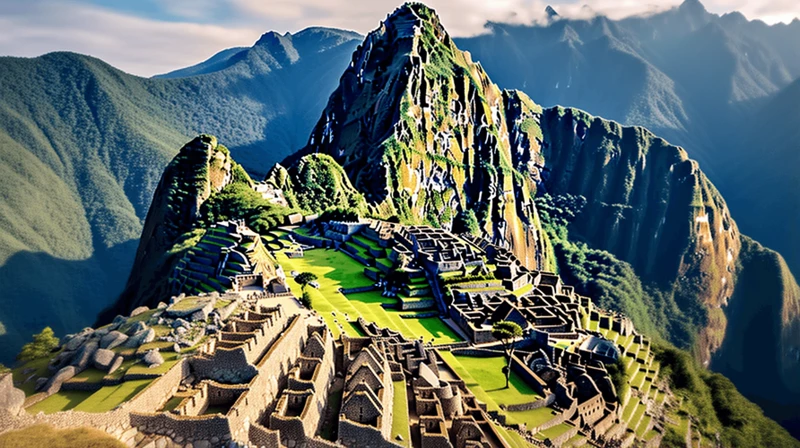
Inca culture was deeply intertwined with their sacred sites and temples, each holding immense spiritual significance and serving as a connection between the earthly realm and the divine. Among these revered locations, Machu Picchu stands as the epitome of Inca civilization. This awe-inspiring citadel nestled in the Andes mountains was believed to be a sacred site, a center of pilgrimage, and a place of worship. Its strategic positioning and the intricate architectural design reflect the Inca’s deep understanding of celestial alignments and their relationship with cosmic forces. Another notable sacred site is Qorikancha, the Golden Temple in Cusco. This grand temple dedicated to Inti, the Sun God, was a place of tremendous reverence and held vast amounts of gold and other precious materials. The Inti Raymi, the grand Sun Festival, was celebrated here, marking the winter solstice and honoring the power of the sun. These sacred sites and temples served as places of worship, political centers, and hubs for important ceremonies, reinforcing the spiritual beliefs and cultural practices of the Inca people.
Machu Picchu: The Sacred City
Machu Picchu, often hailed as the crown jewel of Inca civilization, is a testament to the architectural brilliance and spiritual significance of the Inca people. Nestled high in the Andes Mountains of Peru, this remarkable site served as a sacred city for the Inca elite and was believed to be a place of great spiritual power. The city’s strategic location, perched atop a mountain ridge, showcases the Inca’s deep connection with the natural world. Machu Picchu is adorned with temples, terraces, and ceremonial fountains, all meticulously designed and constructed with precision. The Intihuatana Stone, or the “Hitching Post of the Sun,” is particularly notable – it served as an astronomical observatory and played a central role in Inca rituals associated with the sun.
In addition to its architectural splendor, Machu Picchu holds great spiritual significance. It is believed to have been a pilgrimage site, where the Inca elite would journey to commune with the divine and seek guidance for their empire. The layout of the city itself is thought to be aligned with important celestial events, such as solstices and equinoxes, further reinforcing its spiritual connection. The natural surroundings, including the imposing Huayna Picchu mountain and the sacred river flowing below, added to the mystical ambiance of the site.
Today, Machu Picchu continues to captivate visitors from around the world who flock to experience its awe-inspiring beauty and sense of sacredness. Though exact details of the rituals conducted at Machu Picchu remain a mystery, the site itself serves as a testament to the reverence and spiritual devotion of the Inca people. Exploring the ruins of this remarkable city allows us to glimpse into the rich tapestry of Inca culture and their deep connection with the spiritual realm.
Inti Raymi: The Sun Festival
Inti Raymi, also known as the Sun Festival, was one of the most important and grandest ceremonies in Inca culture. This extravagant celebration took place annually in Cusco, the capital of the Inca Empire, during the winter solstice, around June 24th. The festival was dedicated to Inti, the Sun God, who was considered the ancestral deity and the life-giver.
Inti Raymi was a highly anticipated event that attracted people from all corners of the empire to honor and pay homage to the Sun God. The festival lasted for several days and involved numerous ritual activities and performances. The main ceremony took place at the grand fortress of Sacsayhuamán, located just outside of Cusco. Thousands of people, including local inhabitants, nobles, and representatives from different regions, gathered to witness the spectacle.
The ceremony began with a procession led by the Inca Emperor, adorned in elaborate ceremonial attire and accompanied by priests and attendants. Participants wore their finest garments and showcased a display of rich cultural symbols. The ceremony included ancient rituals such as the offering of various agricultural products, symbolic sacrifices, and the lighting of sacred fires.
During Inti Raymi, the Inca Emperor delivered a powerful speech, giving thanks to Inti for his blessings and acknowledging the importance of the Sun in sustaining life and agricultural prosperity. The festivities also featured traditional music, dance performances, and theatrical reenactments of mythological stories and historical events.
Inti Raymi was not only a religious observance but also a unifying event for the Inca Empire. It reinforced the authority of the ruling elite and served as a display of cultural identity and power. The festival showcased the grandeur of the Inca civilization and demonstrated the harmony between humans, nature, and the divine. The celebration of Inti Raymi was a testament to the Inca people’s deep reverence for the Sun God and their reliance on his benevolence for their survival and prosperity.
Qorikancha: The Golden Temple
Qorikancha, known as the Golden Temple, was one of the most revered and significant sacred sites in Inca culture. Situated in the heart of Cusco, Peru, this magnificent temple was dedicated to the worship of Inti, the Sun God. The name “Qorikancha” translates to “Golden Courtyard,” and it was indeed a sight to behold. The main structure was adorned with sheets of gold, and the walls were adorned with intricate carvings and precious gemstones. The splendor of the temple was a testament to the Inca’s immense wealth and reverence for their deity.
The Golden Temple served as both a religious and administrative center. It housed high-ranking priests who were responsible for conducting elaborate rituals and ceremonies to honor Inti. The rituals held at Qorikancha were focused on ensuring a bountiful harvest, protection, and blessings for the empire. The Inca believed that the Sun God held the power to bestow prosperity and divine favor upon their people.
Inside the temple, there were various chambers dedicated to different deities and purposes. The most sacred of these chambers housed the Sun Disk, an emblematic representation of Inti. It was believed to radiate divine energy and played a central role in the ceremonial practices conducted at the temple.
Qorikancha also acted as an astronomical observatory, reflecting the Inca’s advanced understanding of celestial movements. Special windows and carefully positioned openings allowed for precise alignments with the solstices and equinoxes, which were significant events in the Inca calendar. These alignments helped in determining the timing of important agricultural and religious activities.
Unfortunately, much of the extravagance and grandeur of the Golden Temple was plundered and destroyed by the Spanish conquistadors during their colonization of Peru. The temple was later repurposed, and a Christian church, the Santo Domingo Convent, was built upon its foundations. However, despite the changes, remnants of the original Inca architecture and artwork can still be seen today, standing as a testament to the splendid and sacred history of Qorikancha, the revered Golden Temple of the Incas.
Ceremonial Offerings and Sacrifices
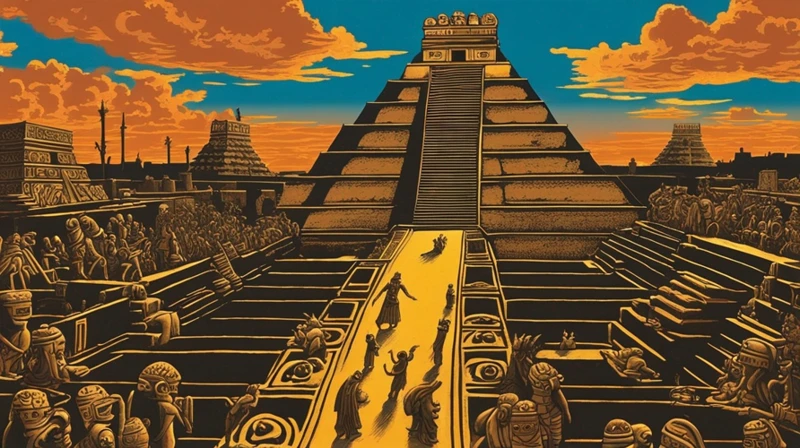
Ceremonial offerings and sacrifices held a significant place in Inca culture, representing a means of communication and exchange with the spiritual realm. Chicha, the traditional Inca beer, was a staple in many rituals. It was brewed using maize and served as a sacred beverage offered to the gods and spirits. The process of making chicha involved elaborate rituals, including the chewing and spitting of maize by the priestesses to initiate the fermentation process. Animal sacrifices were also common, as they were believed to bridge the gap between the mortal and spiritual realms. Llamas, a revered animal in Inca society, were often chosen as sacrificial offerings to express gratitude or seek divine intervention. Additionally, the Capacocha ceremony was the highest form of sacrifice, involving the ritualistic offering of children and prized possessions. This practice highlights the utmost devotion and reverence the Inca people had for their deities, reflecting their belief in reciprocity and the need to maintain balance in the cosmic order. Through these offerings and sacrifices, the Inca sought to establish a harmonious relationship with the spiritual world and ensure the well-being and prosperity of their civilization.
Chicha: The Traditional Inca Beer
Chicha, the traditional Inca beer, held both ceremonial and social significance in Inca culture. This beloved beverage was made from fermented corn and served as a staple during religious rituals, feasts, and social gatherings. The process of brewing chicha was considered sacred and was accompanied by specific rituals and traditions. Women, known as ‘acllas,’ played a central role in the production of chicha. They would laboriously chew maize kernels and then spit the chewed maize into a communal vessel. This saliva-fermented mixture was then left to ferment further, resulting in a frothy and mildly alcoholic beverage. Chicha was often brewed for important Inca ceremonies, where it was considered a sacred libation offered to the gods. It was believed to bridge the gap between the spiritual and physical realms, establishing a connection between the Inca people and their deities. Chicha was also an integral part of social gatherings, fostering camaraderie and community bonding. It was served in large pottery vessels, called ‘qero,’ which were passed around among participants during festive occasions. The act of sharing chicha symbolized unity and solidarity among the Inca people, creating a sense of togetherness and celebration. The brewing and consumption of chicha not only quenched the thirst of the Inca people but also served as a powerful symbol of their cultural heritage and collective identity.
Animal Sacrifices: Connecting with the Spiritual Realm
Animal sacrifices held a significant role in the Inca culture, serving as a means to connect with the spiritual realm and seek divine guidance and protection. These sacrifices were conducted in elaborate rituals, carefully performed by skilled priests. Different animals were chosen for specific purposes, each representing different elements or deities. The process of sacrifice involved the careful selection and preparation of the animal, with great attention given to its quality and condition. The Inca believed that by offering the life force of the animal, they were able to communicate their reverence and devotion to the spirits and deities they worshipped.
The animals chosen for sacrifice varied depending on the purpose of the ritual. Llamas, a sacred animal in Inca culture, were often sacrificed as a way to honor the gods and seek their blessings. They were particularly important in ceremonies associated with agricultural fertility and abundance. Additionally, guinea pigs, known as “cuy” in the Inca language, were also frequently used in sacrifices due to their association with prosperity and good fortune.
The actual sacrifice was performed with great solemnity and precision. The priests would offer prayers and chant incantations to invoke the spirits, while the animal was carefully restrained. A fatal blow to the animal’s chest or throat was delivered, offering its life force to the divine forces believed to govern the universe. The sacrifice was a sacred act of reciprocity, as the Inca believed that by giving a valuable offering, they could receive blessings and protection in return.
Animal sacrifices in the Inca culture were not only limited to religious rituals, but also had practical implications. They were seen as a way to ensure the well-being and balance of the community, as well as to foretell future events. The organs and blood of the sacrificed animal were often examined by priests who interpreted the signs and omens they believed were revealed by these rituals.
The significance of animal sacrifices in the Inca culture cannot be overlooked. They were a profound expression of their spiritual beliefs and a way to connect with the unseen forces that governed their lives. Through these rituals, the Inca sought to maintain harmony between the human and spiritual realms, reinforcing their cultural identity and affirming their place within the cosmic order.
The Capacocha Ceremony: Offering to the Gods
The Capacocha Ceremony: Offering to the Gods
The Capacocha ceremony was one of the most significant and elaborate rituals in Inca culture, serving as a grand offering to the gods. This sacred ceremony involved the selection of children, believed to be the purest and most innocent beings, from various regions of the Inca Empire. These children, known as “capacochas,” were considered to be sacred and were carefully chosen based on specific criteria.
The selected children embarked on a journey, accompanied by priests and attendants, to reach the designated ceremonial site. This journey was often long and arduous, symbolizing the child’s sacrifice and dedication to the gods. Along the way, the procession would stop at sacred locations, making offerings and performing rituals to ensure the safe passage of the capacochas and seek divine blessings.
Upon reaching the ceremonial site, which was usually a mountaintop or a sacred temple, the children would undergo purification rituals and adorn themselves with extravagant garments and jewelry. They would be presented as offerings to the gods, often in the form of statues or figurines representing deities, and surrounded by gifts such as golden treasures, textiles, and food.
The capacochas would then be sacrificed in a solemn and highly symbolic manner. This sacrifice was seen as a way to communicate directly with the gods and seek their favor and protection for the entire Inca Empire. It was believed that through this act, the children would transcend into a divine realm and continue to watch over their people.
The Capacocha ceremony was not only a religious event but also a deeply emotional and communal experience. It served as a reminder of the Inca’s deep devotion to their deities and their willingness to make profound sacrifices for the greater good of their society. This sacred ritual played a crucial role in maintaining the cosmic order and ensuring the harmony and prosperity of the Inca Empire.
Today, remnants of the Capacocha ceremony can still be seen in the archaeological discoveries of well-preserved sacrificial sites, offering a glimpse into the spiritual practices and beliefs of the Inca civilization.
Ritual Practices for Health and Well-being
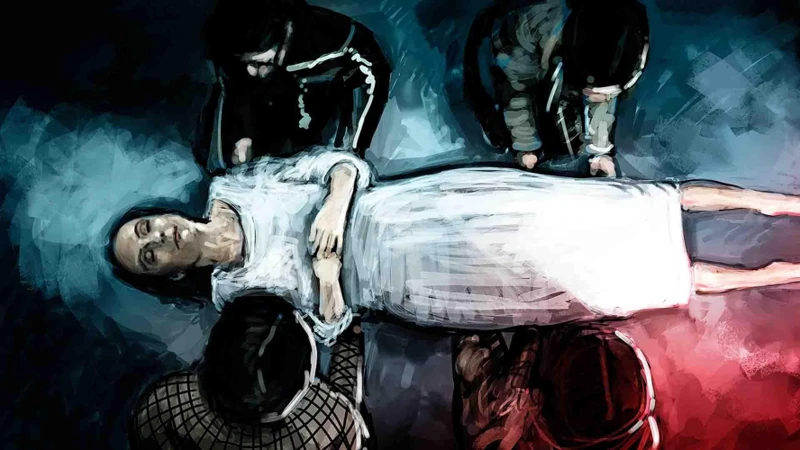
The Inca people had a profound understanding of the link between spirituality, health, and well-being, and their rituals encompassed practices dedicated to maintaining a harmonious balance in these aspects of life. One such practice was the worship of Pachamama, the revered Mother Earth. The Inca believed that Pachamama was the source of life and vitality, and to show their gratitude and seek blessings, they performed rituals involving offerings and ceremonies to honor her. These rituals often involved the use of sacred herbs, plants, and other natural elements, which were believed to hold healing properties and the power to restore physical and spiritual balance. Another practice that was associated with spiritual healing was the consumption of the San Pedro Cactus. This sacred cactus was used by Inca shamans as a powerful means of accessing the spiritual realm, enabling them to gain insights and healing abilities. The cactus was consumed in carefully orchestrated ceremonies, allowing individuals to transcend their physical limitations and connect with the divine. Lastly, the Inca sought the services of Kallawaya Healers who were believed to possess extraordinary knowledge of herbal medicine and healing practices. These healers would perform intricate rituals and use their extensive knowledge of plants and natural remedies to treat ailments and restore well-being. Through these ritual practices, the Inca people sought not only physical health but also spiritual harmony, recognizing the interconnectedness of the mind, body, and spirit in their pursuit of well-being.
Pachamama: Worshiping Mother Earth
In Inca culture, the worship of Pachamama, or Mother Earth, held profound significance. Pachamama was considered to be the giver of life and sustainer of all living beings. The Inca people believed that by honoring and showing respect to Pachamama, they would be blessed with abundance and prosperity. Various rituals and ceremonies were conducted to pay homage to this powerful deity.
One of the most important rituals dedicated to Pachamama was the offering of despacho. Despacho was a ceremonial offering made to Pachamama to express gratitude and seek her blessings. It involved meticulously arranging an array of symbolic items such as coca leaves, feathers, and sacred objects on a cloth or paper as an offering. These offerings were then burned or buried, symbolically returning them to Pachamama.
Another ritual associated with Pachamama was the Challa. Challa involved sprinkling offerings such as grain, wine, and the blood of sacrificed animals onto the earth, as a gesture of giving back to Pachamama. This ceremony was typically performed during agricultural activities, seeking fertility and protection for the land and crops.
The respect for Pachamama extended beyond specific rituals and permeated daily life. The Inca people believed that every part of nature was alive and had a spirit, and treating the earth and its resources with reverence was essential. They practiced sustainable farming methods, such as terracing and crop rotation, to ensure the well-being of the land and its fertility for future generations.
The worship of Pachamama continues to this day in certain regions of South America, where indigenous communities maintain their connection to their ancestral traditions. The reverence for Mother Earth and the belief in her nurturing and providing nature remain central to their cultural and spiritual practices.
The worship of Pachamama exemplifies the deep connection that the Inca people had with the natural world. It highlights their profound understanding of the interdependence between humans and the environment, emphasizing the need to live in harmony with nature. By honoring and worshiping Pachamama, the Inca people sought to maintain a harmonious relationship with the Earth and ensure the continued prosperity of their communities.
San Pedro Cactus: Gateway to the Spiritual World
The San Pedro Cactus holds a significant role in Inca rituals as a gateway to the spiritual world. This sacred plant, also known as “Wachuma,” was highly revered for its hallucinogenic properties and its ability to induce altered states of consciousness. It was believed that consuming the San Pedro Cactus allowed individuals to communicate with spirits, gain insight, and receive divine guidance. The cactus was typically prepared in a ceremonial brew, which was consumed under the guidance of a shaman or spiritual leader.
The San Pedro Cactus ceremony was a deeply transformative experience, often accompanied by singing, chanting, and ritualistic practices. Participants would gather in sacred locations, such as temples or natural landscapes, to partake in this spiritual journey. The effects of the cactus were said to open doors to the subconscious mind, promoting introspection, healing, and personal growth. It was believed that during the ceremony, one could connect with ancestral spirits, receive wisdom, and gain a deeper understanding of oneself and the universe.
The San Pedro Cactus ceremony was not only a solitary experience but also a communal one. It brought people together, fostering a sense of unity and collective consciousness. Participants would often share their visions and insights, creating a shared narrative that further reinforced their connection with the spiritual realm.
It is important to note that the consumption of the San Pedro Cactus was not taken lightly. It was done with reverence, respect, and with the guidance of experienced shamans who understood the plant’s power and knew how to navigate the spiritual realms safely.
To this day, the San Pedro Cactus continues to be used in indigenous ceremonies and spiritual practices, carrying forward the ancient traditions and beliefs of the Inca civilization. Its role as a gateway to the spiritual world remains an integral part of Inca culture, providing a profound and transformative experience for those who seek connection with the divine. /exploring-science-planetary-alignments/
The Ritual of Kallawaya Healers
The Ritual of Kallawaya Healers is a unique and ancient practice within Inca culture that revolves around the spiritual and medicinal knowledge of the Kallawaya healers. These healers, known as “Kallawaya doctors,” were highly respected members of the community, revered for their ability to connect with the spiritual realm and offer healing and guidance to those in need. The ritual begins with a pilgrimage to a sacred mountain or lake, where the healer engages in deep meditation and communing with the spirits. This acts as a source of divine inspiration and guidance for the healer in their healing practices.
During the ritual, the Kallawaya healer uses a combination of herbs, crystals, and sacred objects to perform healing ceremonies. They may also incorporate elements of music, dance, and chanting into the ritual to invoke spiritual energies for healing. The healers believe that their connection with the spirit world allows them to tap into the vital life force energy and channel it to restore balance and harmony within the individual.
The Kallawaya healers have an extensive knowledge of herbs and medicinal plants, passed down through generations. They use this knowledge not only to treat physical ailments but also to heal emotional and spiritual imbalances. Their healing practices are holistic, addressing the well-being of the whole person.
One fascinating aspect of the Kallawaya healing ritual is their belief in the power of sacred amulets. These amulets are believed to hold protective and healing energies. The healers may provide their patients with amulets to carry as a powerful talisman for continued healing and protection.
The Ritual of Kallawaya Healers is still practiced today, preserving the ancient wisdom and traditions of the Inca culture. It serves as a testament to the Inca people’s deep connection with the spiritual world and their belief in the power of healing energies. The rituals performed by the Kallawaya healers not only provide physical healing but also offer a sense of spiritual well-being, restoring balance and harmony for those seeking their assistance.
Conclusion
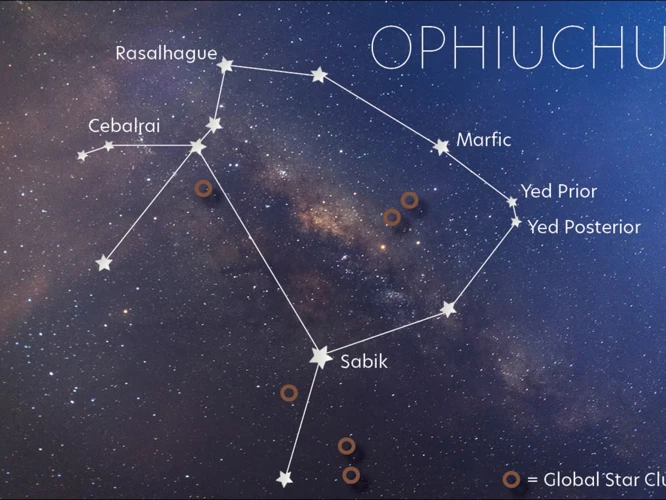
In conclusion, the sacred rituals and ceremonies of the Inca culture not only served as a means to connect with the spiritual realm but also played a crucial role in maintaining social cohesion and reinforcing cultural identity. These rituals were deeply rooted in the belief system of the Inca people and provided a framework for understanding their place in the cosmos. Through their elaborate ceremonies and offerings, the Inca sought to honor their deities and spirits, seeking their favor and protection. These rituals were not just religious practices, but also important social events that brought the community together, fostering a sense of unity and shared identity. The Inca’s reverence for nature, their deep connection to the land, and their belief in the interconnectedness of all living beings were central themes in their rituals. By worshiping Pachamama, the Earth Mother, and performing sacred rituals for health and well-being, such as those involving the San Pedro cactus, the Inca demonstrated their belief in the harmony between humans, nature, and the spiritual world. The rituals of the Inca civilization continue to captivate and intrigue us today, offering an insight into a rich and complex culture that valued tradition, spirituality, and community bonds. The legacy of these sacred rituals lives on through the ruins of sacred sites like Machu Picchu and the continued practice of traditional ceremonies in modern-day Peru. Studying and appreciating the rituals of the Inca culture allows us to not only learn from their wisdom but also to gain a deeper understanding of the interconnectedness of humanity and the natural world.
Frequently Asked Questions

What were the main purposes of rituals in Inca culture?
Rituals in Inca culture served multiple purposes, including honoring and communicating with deities, seeking blessings and protection, fostering social cohesion, and maintaining a spiritual connection with the natural world.
Who were some of the important spirits and deities in Inca beliefs?
Some significant spirits and deities in Inca beliefs included Wiracocha, the creator god; Inti, the Sun God; Pachamama, the Mother Earth goddess; and Viracocha, the god of civilization.
Rituals played a crucial role in social cohesion within Inca society by bringing the community together, reinforcing shared values and norms, and strengthening interpersonal relationships through collective participation and celebration.
What is the significance of Machu Picchu in Inca culture?
Machu Picchu was considered a sacred city by the Incas, believed to be a place of spiritual power and connection to the divine. It served as a ceremonial site, a pilgrimage destination, and a center for worship and ritual practices.
What is the Inti Raymi festival?
The Inti Raymi festival was one of the most important and grand celebrations in Inca culture. It was dedicated to honoring Inti, the Sun God, and involved elaborate ceremonies, processions, music, dancing, and sacrifices to ensure the agricultural fertility and well-being of the community.
What was the significance of Qorikancha, the Golden Temple?
Qorikancha was a revered temple in Inca culture, dedicated to the worship of Inti, the Sun God. It was adorned with gold and precious treasures, symbolizing the sun’s radiant power and playing a vital role in Inca rituals, offerings, and astronomical observations.
What was the traditional Inca beer called, and what was its role in ceremonies?
The traditional Inca beer is called Chicha. It played a significant role in various ceremonies and rituals, including offerings to deities and ancestral spirits, as well as communal feasts and celebrations.
Why did the Inca people practice animal sacrifices?
The Inca people believed that animal sacrifices served as a means to establish a connection between the earthly realm and the spiritual realm. These sacrifices were seen as offerings to deities and spirits, ensuring their favor, protection, and a harmonious relationship with nature.
What was the Capacocha ceremony, and why was it important?
The Capacocha ceremony was a highly significant ritual in Inca culture. It involved the sacrifice of children and other valuable items to honor and appease the gods during times of crisis or major events. The ceremony aimed to maintain balance, seek divine intervention, and ensure the well-being of the community.
Who were the Kallawaya healers, and what role did their rituals play in Inca society?
The Kallawaya healers were revered traditional medicine practitioners in Inca society. Their rituals, which involved the use of sacred plants and spiritual practices, were believed to bring about healing and spiritual balance, addressing both physical and mental well-being.
References
- Inca Rituals and Sacred Mountains: A Study of the World’s …
- Rituals – Inca Religion – Weebly
- 5 Ancestral Ceremonies You Can Enjoy in Peru
Frequently Asked Questions

1. What were the main spirits and deities worshipped in Inca culture?
In Inca culture, the main spirits and deities worshipped included Inti, the sun god, Mama Killa, the moon goddess, and Pachamama, the goddess of the earth.
Rituals played a vital role in promoting social cohesion by bringing communities together, reinforcing cultural values, and establishing a shared sense of identity among the Inca people.
3. What is the significance of Machu Picchu in Inca culture?
Machu Picchu is considered the sacred city of the Incas. It served as a ceremonial and religious site, possibly reserved for the Inca elite, and is a testament to the architectural and engineering prowess of the Inca civilization.
4. What was the purpose of the Inti Raymi festival?
The Inti Raymi festival, also known as the Sun Festival, was celebrated to honor Inti, the sun god. It marked the winter solstice and was a time of gratitude for the bountiful harvest and a request for a prosperous year ahead.
5. What was the significance of Qorikancha in Inca religion?
Qorikancha, also known as the Golden Temple, was the most important religious site in the Inca empire. It was dedicated to the worship of Inti, the sun god, and showcased the Inca’s wealth and architectural brilliance.
6. What was the role of chicha in Inca rituals?
Chicha was a traditional Inca beer made from fermented maize. It symbolized hospitality and played a significant role in religious ceremonies and social gatherings, fostering a sense of unity and interconnectedness among the Inca people.
7. Why were animal sacrifices important in Inca culture?
Animal sacrifices were believed to bridge the gap between the physical and spiritual realms, enabling communication with the gods and ancestors. They were seen as offerings of gratitude and requests for blessings and protection.
8. What was the Capacocha ceremony?
The Capacocha ceremony was a ritualistic offering to the gods involving the sacrifice of children. It was believed that by offering the most prized possessions and lives of children, the Inca would ensure prosperity, fertility, and protection for their empire.
9. How did the Inca worship Pachamama, the goddess of the earth?
The Inca worshipped Pachamama through rituals that involved offering agricultural products, such as coca leaves and grains, to the earth. These offerings were made to seek blessings for fertility, protection, and a harmonious relationship with nature.
10. Who were the Kallawaya healers and what was their role in Inca society?
The Kallawaya healers were traditional medicine practitioners in Inca society. They performed rituals using medicinal plants, including the San Pedro cactus, to heal physical and spiritual ailments. They were highly respected for their healing abilities and played a crucial role in maintaining the well-being of the community.







